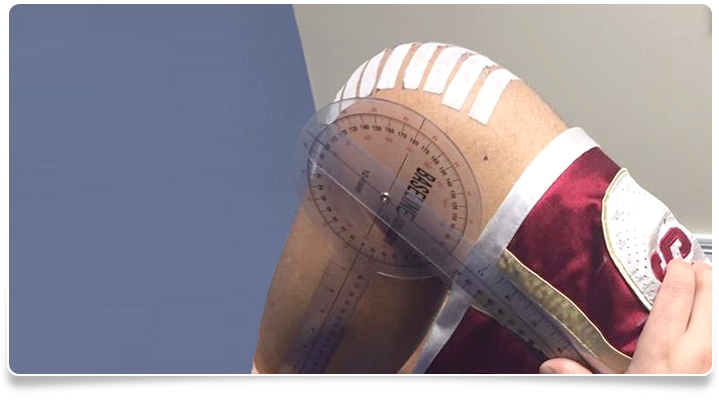Ask Us A Question
Email a general orthopedic or
sports physical therapy question
and we will answer it!
Knee Replacement
Knee Replacement – Anatomy of the knee joint
The knee joint is comprised of the femur or thigh bone, the tibia or shin bone, and the patella or knee cap. It is stabilized by the cruciate ligaments, cartilage and hamstring, calf and quadriceps muscle.
What is Degenerative Joint Disease (DJD)?
Degenerative joint disease is the degeneration of the cartilage in the knee joint that may cause pain, stiffness and loss of motion of the joint. Rheumatoid arthritis, osteoarthritis or a traumatic injury can lead to degenerative joint disease. As the surfaces become worn, less lubricant or synovial fluid is produced and more friction occurs. A cycle of inflammation and pain then ensues.
Treatment of DJD
Non-Operative:
| Operative:
|
What are the indications for a TKR?
- Disabling pain resulting in decreased functional mobility
- Radiographic evidence of severe degeneration
- Failed non-operative treatment
What does a surgeon do when he/she replaces a knee joint?
A surgeon performs a total knee replacement by replacing the ends of the femur and the corresponding tibia with a prosthesis or metal component. The undersurface of the patella may also receive a prosthesis.
How long does the surgery take? What will I expect when I wake up?
The operation usually takes 2 1/2-3 hours. When you wake up from surgery your knee will most likely be in an immobilizer and a compressive dressing. You will also have a surgical bandage on the incision.
What rehabilitation will I have after a TKR?
You will receive PT in the hospital and in all likelihood be urged to walk with a walker after surgery. The physical therapist will review gait training with the assistive device. The therapist will instruct on exercises to increase quadriceps strength and improve ROM. Specifically, the therapist will perform exercises that both fully extend and flex your knee. THIS IS IMPERATIVE!! When you are discharged from the hospital, you will either be scheduled for home physical therapy or outpatient physical therapy. Therapy will continue to help you improve ROM as a priority and strength later in the recovery so that you will be able to return to prior level of activity. It is very important to be diligent with all aspects of the physical therapy to maximize your outcome. For example, studies indicate that patients who can achieve 90° of bend to the knee as quickly as tolerated, find that rehabilitation is more comfortable than those who do not.
What activities can I do after my TKR?
Some activities that you can do after your TKR include bicycling, dancing, golf, swimming, walking, bowling, rowing, cross country skiing, horseback riding and weight lifting. Activities that are generally discouraged include those that involve high or repetitive impact, or twisting, such as basketball, football, racquetball and hockey.

